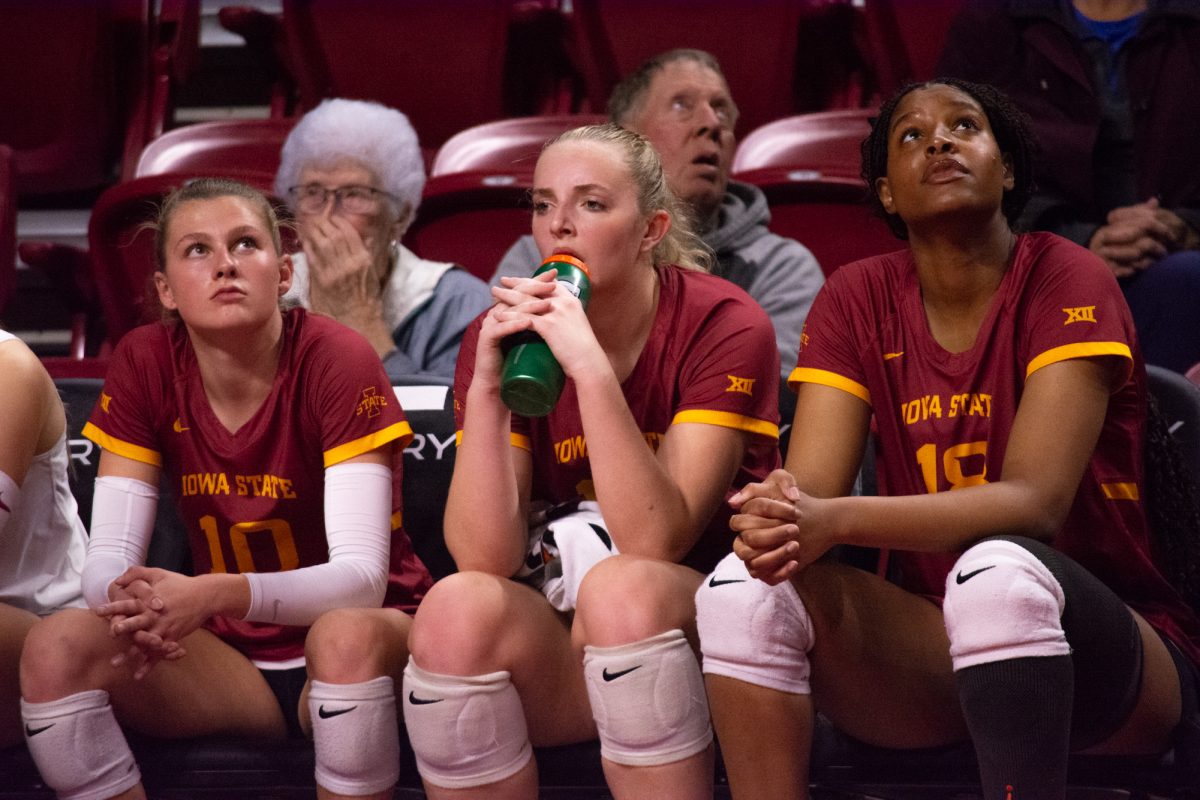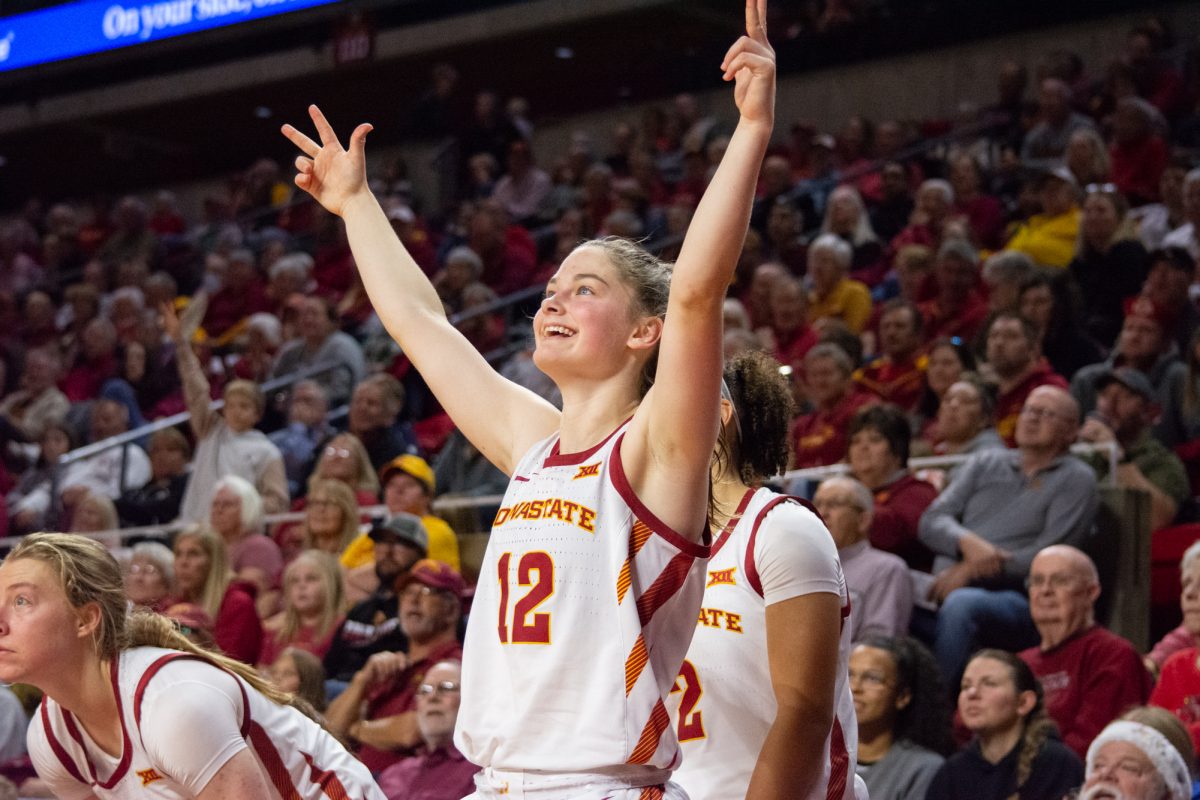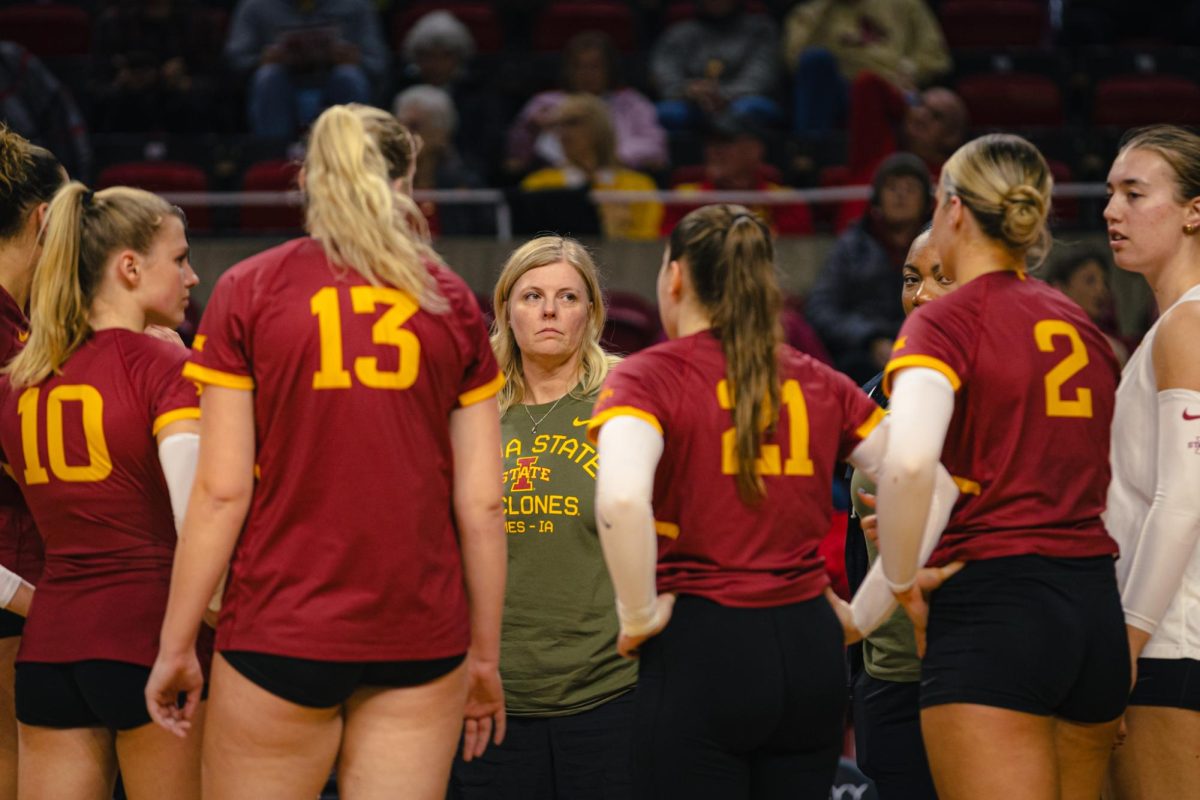Iowa farmers struggle with dipping prices
February 15, 1999
Although 1998 was a tough year for farmers across Iowa, the downward trend in commodity prices may be changing.
This is the consensus of two members of Iowa State’s faculty in the economics department: Jim Kliebenstein, professor of agricultural economics, and John Lawrence, Extension livestock economist.
According to the Iowa Agricultural Statistics Service’s (IASS) Web site, the prices Iowa farmers have received for corn, soybeans and hogs are among the lowest in a decade.
Lawrence said all of Iowa’s producers are concerned, regardless of the size of their operations.
“Financially, it’s been a pretty tough year,” he said.
Kliebenstein said some producers will have a difficult time this year, but many should be able to survive.
“There will be some farmers, particularly those that are highly leveraged, who will have trouble,” Kliebenstein said. “Those that went into [the year] financially secure should be able to weather the storm.”
Hog producers were hit by the storm of falling prices harder than other sectors of agriculture. The average price for hogs was $36.50, well below the average prices in the last decade, according to the IASS.
“The hog industry has been hit as hard as any,” Kliebenstein said. “The relative dip in hog prices has been severe.”
He said a number of hog producers are altering their production plans.
“The larger producers have not cut back to a large extent,” Kliebenstein said. “They have ratcheted down their growth plans.”
Kliebenstein said one of the producers’ biggest concerns is profitability in the long and short terms, according to a survey conducted by the economics department.
He said the producers’ profit margin has been shrinking, and it costs more to produce pigs now than in the past. This has been going on for the last six to eight years, Kliebenstein said.
He said now more pigs must be produced to get the same profit, which helps to explain the decrease in hog farms in Iowa. From 1992 to 1996, there was a 42 percent decline in the number of hog farms in Iowa, Kliebenstein said.
Decreasing hog prices and the decline of hog operations could change the structure of Iowa’s farms. Kliebenstein said he expects to see the medium-sized producers decline, but there is still a place for small operations.
Kliebenstein said there might be a place for small- or medium-sized producers in specialized niche markets. By producing value-added products, hog and grain farmers may be able to command a premium in specialized markets. These products could include organic pork chops or high oil soybeans, he said.
The agricultural industry could continue to see more specialized markets in the future, Kliebenstein said.
Specialized markets that could bring in higher prices for corn and soybeans would be welcome news to Iowa farmers who have received some of the lowest prices in a decade for their commodities.
According to the IASS, 1998’s average price for corn was $2.13, the lowest average price since 1992. The average price for soybeans in 1998 was $5.41, the lowest in more than nine years.
Lawrence said it is still too early to predict the economic stability of last year’s season, since many producers have grain still in storage or have not finished selling.
“We really don’t know how bad or how good things are as yet,” Lawrence said.
To raise the worldwide price plane for corn and beans, Lawrence said it would likely take a weather scare or a crop disaster. He said the supplies, which are very high, would have to be reduced to receive higher grain prices.
Agriculture operates on a worldwide market, and the economics department’s Extension specialists are watching South American crop production. Lawrence said this is part of how the economists’ predictions are made, since the seasons in South America are earlier than in the north.
Lawrence does expect things to improve for Iowa’s producers. He said the price of hogs should increase to over $40 by July. While grain prices are determined largely by the weather, he predicts the prices to improve over last year.
Lawrence said he expects cattle and hog markets to improve soon.
“Two thousand could be a profitable year for pork producers,” Lawrence said.
Iowa hog producers could benefit more than other states if Lawrence’s predictions are accurate. Because Iowa is the leading state in pork production, as reported in the IASS 1997 farm analysis, the state is impacted by prices more than any other.
“Iowa may have had a more severe impact because we raise more hogs,” Lawrence said.
Even with his positive speculation, Lawrence said producers and lenders are still “cautious” about prices and loans. Iowa’s farmland value was down 1.9 percent in 1998, according to the Iowa Economy News and Trends Web site.
Lawrence said two programs currently are available to help Iowa producers evaluate their operation’s financial status.
Strategic Planning sessions, a three-day program held for various operations in areas throughout the state to help farm managers make a financial plans, can be scheduled through the county’s local Extension office.
A one-day satellite broadcast program will be held on March 8. This program, titled “Agriculture in the 21st Century: Surviving and Thriving,” will feature national speakers and a panel comprised of local producers.






